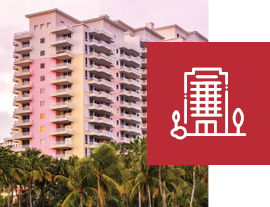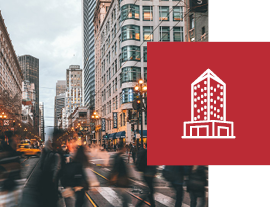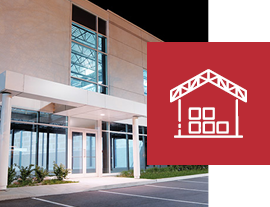
Market Trends

Survey: 40% of Office Occupants Will Seek Shorter Leases
Collecting responses from 207 office occupiers, Colliers’ “Return to Office” survey highlighted interesting changes in a market rattled by COVID-19. Forty percent of respondents said they would be looking for shorter lease terms compared to pre-pandemic conditions. Data from the survey showed a range of responses:
- Of the 69 percent of respondents who specified a number of days in the office, three (32 percent) was the most popular, followed by three to four days (24 percent) and two days (14 percent).
- The use of a hybrid approach jumped from 20 percent pre-pandemic to 77 percent after COVID-19. Totally remote increased from 2 percent to 5 percent, while totally in-office dropped from 78 percent to 11 percent.
- Two in five responses expected no change in space per person, while 34 percent expected decreased space.

Study: Cannabis Cultivation Won’t Harm Surrounding Market Values
The burgeoning industry around the production and cultivation of cannabis still resides in a legal gray area, where federal law technically prohibits its sale while many states have legalized marijuana use. Considering the market’s relative youth, government regulation and ordinances (on the state and local level) are often ill-prepared to deal with cannabis-related business. One Connecticut town’s regulations called for evidence that land used for cannabis production will have little to no impact on the market values of the surrounding properties.
Pullman & Cromley, a local law firm, commissioned a neighborhood impact study that examined commercial real estate trends by comparing leased commercial assets near cannabis facilities to those farther away, as well as industrial inventory near such a facility compared to the area as a whole. The appraiser found that a cannabis cultivation and production facility would not negatively impact market values.

Investment Booms in Retail Market Despite Inflationary Worries
As capital began to flow back into the various commercial real estate sectors after many investors headed to the sidelines at the height of the COVID-19 pandemic, retail often took a backseat to safer destinations like industrial and multifamily assets. But new data from CBRE shows that the prospects for retail are brightening, with $98.4 billion invested in the sector in the 12 months ending in 2Q2022, which is an increase of 115.4 percent compared to the year — the highest jump in any of the five major sectors in the study.
But retail assets face an uneasy future with concerns of inflation. A recent study by HomeServe showed that consumers were least likely to give up dining out (49 percent), streaming entertainment (47 percent), and vacations (45 percent). Conversely, pet grooming (16 percent) and leisure club membership (18 percent) were the areas most likely to be cut by those concerned with inflation.

RevPAR to Top Pre-Pandemic Levels Despite Sagging Business Travel
The hospitality industry will forever be changed by the COVID-19 pandemic in how it interacts with customers and how properties are managed. But when it comes to the bottom line, the numbers say the sector is on its way to surpassing pre-pandemic highs. According to the Midyear Hospitality National Report by Marcus & Millichap, the average daily rate for hotel rooms hit $140.59 in June, topping the previous high from February by 7 percent. While occupancy remained 4.5 percent below 2019 levels, the improved per-room returns meant revenue per available room (RevPAR) climbed to $87.62, just north of the pre-COVID-19 high of $86.60.
Investment activity also paints a promising picture for hotels. The average sale price per room over the previous year in June was $110,400, a new high for the sector, while cap rates dropped to 7.5 percent after nearing 9 percent in 2019.

Rental Income Jumps 19% From Old to New Tenants
Considering increasing interest rates and the tight supply of housing, demand for multifamily looks to be solid for the near future. For landlords and owners, the numbers support such optimism. According to recent data by RealPage Market Analytics, new renters are paying 19 percent more than the previous inhabitants of the same spaces. While rental rates jump with new leases, the same report noted lease trade-out slowed in June compared to recent months, meaning the overall volume of new renters could decrease despite continued demand.
Looking at specific markets, three areas in Florida performed the best. Miami reported new leases paying 32.6 percent more than previous renters, followed by Fort Lauderdale, Fla., at 27.6 percent, and Orlando, clocking in at 26.4 percent. New York, meanwhile, reported a strong recovery with growth in new rents reaching 30.5 percent in June, compared to a COVID-19 low of -21.5 percent in November 2020.

Plan Floated to Boost Off-Hours Activity in Downtown San Francisco
One of the most picturesque and beautiful cities in the world, San Francisco is hoping to amp up interest in the central business district outside of normal working hours. Downtown SF Partnership has announced a Public Realm Action Plan to attract foot traffic and businesses to the downtown area outside of the usually 9-to-5.
Citing COVID-19 as a force that revealed the CBD as a one-use district, Downtown SF Partnership Executive Director Robbie Silver outlined the plan to include improved pedestrian traffic flows, more green space and public open spaces, and reduced retail and restaurant vacancies in the downtown area.
“Downtown, and primarily the Financial District, was really exposed as a one-use district after COVID,” Silver tells Bisnow. “We definitely had some business closures on the ground floor as a result. Many are definitely struggling with operations, because if people are coming back to work, they are coming back Tuesdays, Wednesdays, and Thursdays.”

Survey: Industrial Most Likely ‘CRE Darling’ to Face Difficulties
They say all good things come to an end — and while there’s not an immediate end in sight for industrial’s years-long robustness, difficulties could be ahead. In Trepp’s 2022 CRE Sentiment Survey, respondents chose industrial as the most likely “darling” sector to see cracks in its fundamentals by the end of the year. More than 35 percent tabbed industrial as the most likely to face challenges, ahead of multifamily (26 percent) and self-storage (12 percent).
According to the survey results, CRE professionals have a pessimistic view for the near future:
- 59 percent said CRE fundamentals will somewhat or significantly worsen by the end of 2022, compared to just 14 percent who expected improvement.
- Inflation (70.8 percent), interest rates (59.7 percent), and supply chain constraints (36 percent) are top concerns.
- 83 percent of respondents expect CMBS delinquencies to worsen by early 2023.
Booming Demand for Data Centers Faces Logistic, Cost Pressures
To say demand is “red hot” often includes a bit of exaggeration, but it’s certainly appropriate for the data center market in North America, with demand tripling year over year in H12022. With development hustling to keep up with a seemingly insatiable appetite for investors, nearly 75 percent of the 1,457 megawatts of under-construction capacity in 1H2022 is preleased, according to CBRE research.
While the amount of supply under construction has also tripled YOY, some developments are seeing delays in delivery due to continued logistical problems related to the supply chain and increasing costs for building materials. CBRE pointed to essential equipment like network switches that can take more than a year for delivery. Northern Virginia, the world’s largest data center market, absorbed 270 MW in 1H2022 with another 837 MW under construction. Dallas had the second highest amount under construction with 240 MW.





